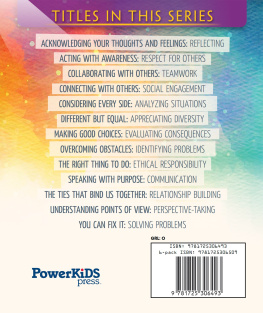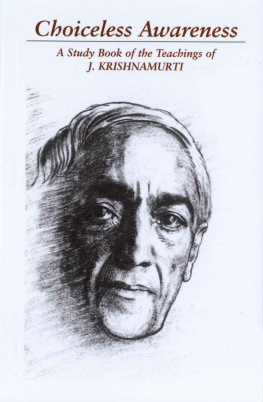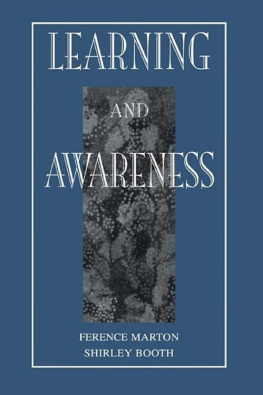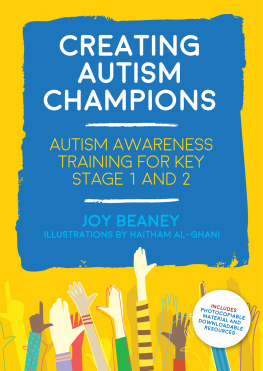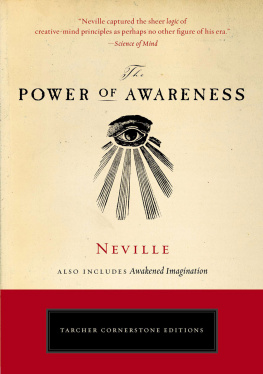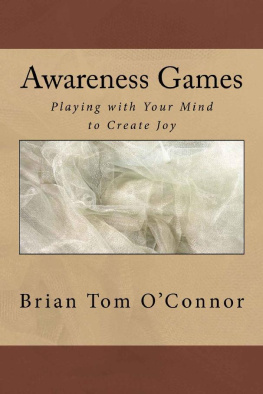Ajaan Fuang Jotiko - Awareness Itself
Here you can read online Ajaan Fuang Jotiko - Awareness Itself full text of the book (entire story) in english for free. Download pdf and epub, get meaning, cover and reviews about this ebook. year: 2018, publisher: Metta Forest Monastery, genre: Religion. Description of the work, (preface) as well as reviews are available. Best literature library LitArk.com created for fans of good reading and offers a wide selection of genres:
Romance novel
Science fiction
Adventure
Detective
Science
History
Home and family
Prose
Art
Politics
Computer
Non-fiction
Religion
Business
Children
Humor
Choose a favorite category and find really read worthwhile books. Enjoy immersion in the world of imagination, feel the emotions of the characters or learn something new for yourself, make an fascinating discovery.
- Book:Awareness Itself
- Author:
- Publisher:Metta Forest Monastery
- Genre:
- Year:2018
- Rating:5 / 5
- Favourites:Add to favourites
- Your mark:
- 100
- 1
- 2
- 3
- 4
- 5
Awareness Itself: summary, description and annotation
We offer to read an annotation, description, summary or preface (depends on what the author of the book "Awareness Itself" wrote himself). If you haven't found the necessary information about the book — write in the comments, we will try to find it.
Awareness Itself — read online for free the complete book (whole text) full work
Below is the text of the book, divided by pages. System saving the place of the last page read, allows you to conveniently read the book "Awareness Itself" online for free, without having to search again every time where you left off. Put a bookmark, and you can go to the page where you finished reading at any time.
Font size:
Interval:
Bookmark:
This work is licensed under the Creative Commons Attribution-NonCommercial 4.0 Unported. To see a copy of this license visit http://creativecommons.org/licenses/by-nc/4.0/. Commercial shall mean any sale, whether for commercial or non-profit purposes or entities.
Metta Forest Monastery
Valley Center, CA 92082-1409
U.S.A.
More Dhamma talks, books and translations by Thanissaro Bhikkhu are available to download in digital audio and various ebook formats at dhammatalks.org.
A paperback copy of this book is available free of charge. To request one, write to: Book Request, Metta Forest Monastery, PO Box 1409, Valley Center, CA 92082 USA.
Ajaan Fuang Jotiko, my teacher, was born in 1915 to a small farming family in the province of Chanthaburi, near the Cambodian border of southeastern Thailand. Orphaned at the age of eleven, he was raised in a series of monasteries and received ordination as a monk when he turned twenty. As he began to study the monastic discipline, though, he realized that the monks of his monastery were not really serious about practicing the Buddhas teachings, and he longed to find a teacher who would give him a training more in line with what he had read. His chance came during his second year as a monk, when Ajaan Lee Dhammadharo, a member of the forest ascetic tradition founded by Ajaan Mun Bhuridatto, came to set up a meditation monastery in an old cemetery just outside of Chanthaburi. Taken with Ajaan Lees teachings, Ajaan Fuang reordained in the sect to which Ajaan Lee belonged and joined him at his new monastery.
From that point onward, with few exceptions, he spent every Rains Retreat under Ajaan Lees guidance until the latters death in 1961. One of the exceptions was a five-year period he spent during World War II, meditating alone in the forests of northern Thailand. Another was a six-year period in the early fifties when Ajaan Lee left Ajaan Fuang in charge of the Chanthaburi monastery and wandered about various parts of Thailand in preparation for finding a place to settle down near Bangkok. When in 1957 Ajaan Lee founded Wat Asokaram, his new monastery near Bangkok, Ajaan Fuang joined him there, to help in what was to be the last major project of Ajaan Lees life.
After Ajaan Lees death, Ajaan Fuang was generally expected to become abbot at Wat Asokaram. The monastery by that time, though, had grown into such a large, unwieldy community that he did not want the position. So in 1965, when the Supreme Patriarch of Thailand, in residence at Wat Makut Kasatriyaram (The Temple of the Kings Crown) in Bangkok, asked him to spend the Rains Retreat at his temple, to teach meditation to him and to any of the other monks at the temple who were interested, Ajaan Fuang jumped at the chance.
He spent a total of three Rains Retreats at Wat Makut, wandering about the countryside looking for solitude during the dry seasons. Although he had immense respect for the Supreme Patriarch as an individual, he grew tired of the politicking he saw at the higher ecclesiastical levels and so began looking for a way out. It came in 1968, when a woman named Khun Nai Sombuun Ryangrit donated land to the Patriarch for a small monastery in a mountainous region near the coast of Rayong province, not far from Chanthaburi. Ajaan Fuang volunteered to spend time at the new monastery, Wat Dhammasathit, until a permanent abbot could be found. The monastery, though, was in a very poor area where the local people were not enthusiastic about the idea of a strict meditation monastery in their midst, so no one could be found to take on the position of abbot. Thus, shortly before the Supreme Patriarchs death in a car accident in 1971, Ajaan Fuang accepted the position of abbot at Wat Dhammasathit himself.
It was soon after this that I first met him, in April of 1974. Wat Dhammasathit had the look of a summer camp down on its luck: three monks living in three small huts, a lean-to where they would eat their meals, a kitchen with room for a couple of nuns, and a small wooden structure on top of the hill where I stayed which had a view of the sea off to the south. The land had been donated shortly after a fire had stripped it of all its vegetation, and the hillsides were covered mostly with cogon grass. Yearly fires still swept through the area, preventing trees from taking hold, although the area on the mountain above the monastery was covered with a thick, malarial forest.
In spite of the poor conditions, Ajaan Fuang seemed to have a clear-eyed, down-to-earth wisdom that allowed him to transcend his surroundings an inner peace, happiness, and stability that I envied and admired. After spending a few months practicing meditation under his guidance, I returned to America and then found my way back to Thailand in the fall of 1976 to be ordained as a monk and to begin training under him in earnest.
In my absence, he had begun to develop a small but devoted following of lay meditators. In early 1976 the new abbot of Wat Makut had invited him back to teach there on a regular basis, and for the rest of his life until his death in 1986 he split his time evenly between Bangkok and Rayong. Most of his students came from the professional classes of Bangkok, people who were turning to meditation for spiritual strength and solace in the face of the fast-changing pressures of modern Thai urban society.
During my first years back in Rayong, the monastery was an incredibly quiet and secluded place, with only a handful of monks and almost no visitors. Fire lanes had begun to hold the fires in check, and a new forest was developing. The quiet atmosphere began to change, though, in the fall of 1979, when construction began on a chedi at the top of the hill. Because the chedi was being built almost entirely with volunteer labor, everyone was involved monks, laypeople from Bangkok, and local villagers.
At first I resented the disruption of the monasterys quiet routine, but I began to notice something interesting: People who never would have thought of meditating were happy to help with the weekend construction brigades; during breaks in the work, when the regulars would go practice meditation with Ajaan Fuang, the newcomers would join in and soon they too would become regular meditators as well. In the meantime, I began learning the important lesson of how to meditate in the midst of less than ideal conditions. Ajaan Fuang himself told me that although he personally disliked construction work, there were people he had to help, and this was the only way he could get to them. Soon after the chedi was finished in 1982, work began on a large Buddha image that was to have an ordination hall in its base, and again, as work progressed on the image, more and more people who came to help with the work were drawn to meditation.
Ajaan Fuangs health deteriorated steadily in his later years. A mild skin condition he had developed during his stay at Wat Makut grew into a full-blown case of psoriasis, and no medicine Western, Thai, or Chinese could offer a cure. Still, he maintained an exhausting teaching schedule, although he rarely gave sermons to large groups of people. Instead, he preferred to teach on an individual basis. His favorite way of getting people started in meditation was to meditate together with them, guiding them through the initial rough spots, and then have them meditate more and more on their own, making way for new beginners. Even during his worst attacks of psoriasis, he would have time to instruct people on a personal basis. As a result, his following though relatively small compared to that of Ajaan Lee and other famous meditation teachers was intensely loyal.
Font size:
Interval:
Bookmark:
Similar books «Awareness Itself»
Look at similar books to Awareness Itself. We have selected literature similar in name and meaning in the hope of providing readers with more options to find new, interesting, not yet read works.
Discussion, reviews of the book Awareness Itself and just readers' own opinions. Leave your comments, write what you think about the work, its meaning or the main characters. Specify what exactly you liked and what you didn't like, and why you think so.






